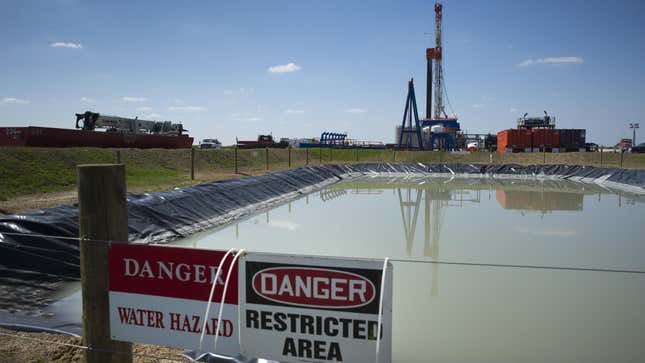
It’s clear that we need to stop natural gas production to avoid the worst effects of the climate crisis. But a new report from the Stockholm Environment Institute’s U.S. Center and the Ohio River Valley Institute shows that there’s another reason companies should stop extracting shale gas in the nation’s Appalachian region: Expanding drilling is not even likely to be profitable.
About a decade ago, shale gas production in Pennsylvania, Ohio, and West Virginia exploded, soaring upward after a sharp decline over the previous two decades. This was largely due to the widespread adoption of fracking, a method that producers used to crack open once-inaccessible underground fossil fuel reserves in rocks deep underground. The Appalachian industry saw a boom, made possible by cheap loans from Wall Street after the 2008 recession.
But now, the market is waning again. For years, there have been signs that natural gas isn’t a good investment. One pre-pandemic 2020 report showed that building out gas infrastructure is putting investors at risk of losing tens of billions of dollars. Amid the spread of covid-19, gas demand plummeted. As the U.S. gets the pandemic under control, gas demand is beginning to rebound modestly. But the question of whether the Appalachian shale market will ever regain its former glory remains.
To answer it, the authors analyzed 200 proposed shale gas drilling projects for Pennsylvania, Ohio, and West Virginia. Using data from energy research and business intelligence agency Rystad Energy, they assessed how much money it would take to operate each proposal and determined how high gas prices would have to be to make the projects profitable.
To determine whether these projects are safe investments, the authors focused on four main factors that could affect the market, then examined academic and government studies on how each one will play out. They found the most important one is the future of domestic gas demand.
On this front, things aren’t looking good for shale drillers. Recent Department of Energy data projects that gas consumption will stay flat over the next decade, the report notes. And since renewable energy has also become cheaper —a trend that is expected to continue—natural gas is an even less desirable choice.

National governments—including the Biden administration—have been making commitments to decarbonize the energy sector. Leading climate scientists say these commitments are by and large not nearly bold enough to meet the scale of the crisis, but they could still help tank the already-struggling Appalachian gas industry. For instance, the Biden administration re-entered the country into the Paris Agreement in January. The authors reviewed five projections of what demand for natural gas would look like in the U.S. if the nation imposed policies consistent with that agreement’s goals, and found most forecasts call for two-thirds less natural gas use in 2040 compared to 2019.
“Our findings suggest that climate policymakers should take seriously what rapid decarbonization likely means for the future of gas in Appalachia,” Peter Erickson, a senior scientist and Climate Policy Program Director with Stockholm Environment Institute and the report’s lead author, said in an email. “This means working closely with economic policymakers and labor to craft a durable economic foundation for the region, one that makes a structural move away from fossil fuels and towards the growing, more hopeful goods and services of the future.”
International factors could further downgrade the outlook for gas, ranging from weak demand abroad as other countries also decarbonize to prices that make it unprofitable to dredge up gas for petrochemicals. All told, the report suggests that the Appalachian natural gas market faces an uncertain future at best. The report confirms recent admissions from the gas industry itself. As DeSmog reported this month, some drilling firms are beginning to realize that the fracking boom is waning and that shale isn’t staying profitable.
A failing Appalachian natural gas market may sound like good news for the climate, but we shouldn’t simply let the market do its work. This kind of unplanned failure could result in companies abandoning polluting fracking wells instead of properly winding them down to curb emissions. It would also be disastrous for workers if firms simply laid them off and pocketed whatever money remains from their operations. A separate recent report from the Ohio Valley River Institute shows that communities are already suffering for that reason.
“There is a need for policymakers to attend to the transition, whatever that looks like,” Eric de Place, research fellow at the Ohio River Valley Institute and co-author of the report, said in an email. “Appalachia is well familiar with the impacts of unplanned transition from coal and steel historically, which resulted from evolving global markets. Decarbonization policy gives us a golden opportunity to prepare for changes, as well as to develop better strategies with a real chance of bringing prosperity to Appalachian communities.”